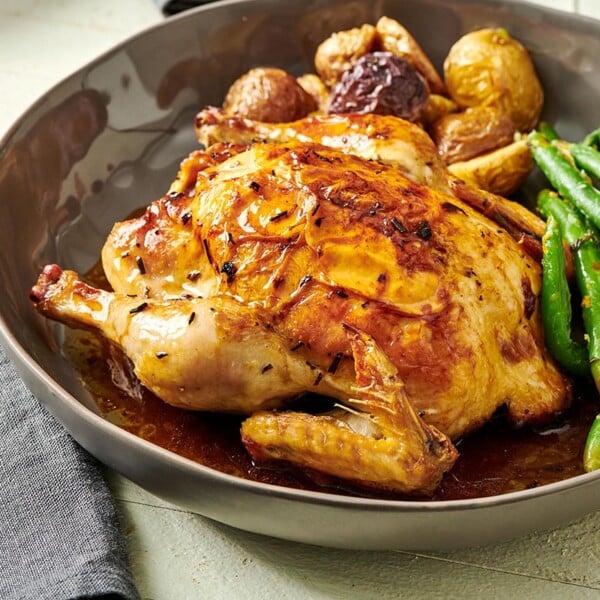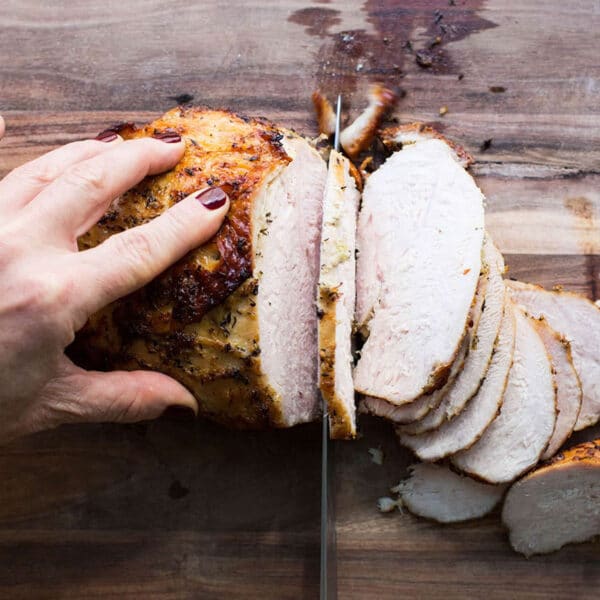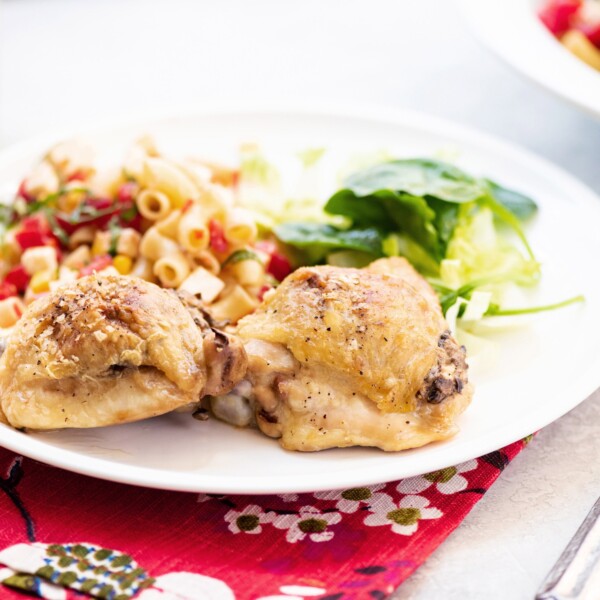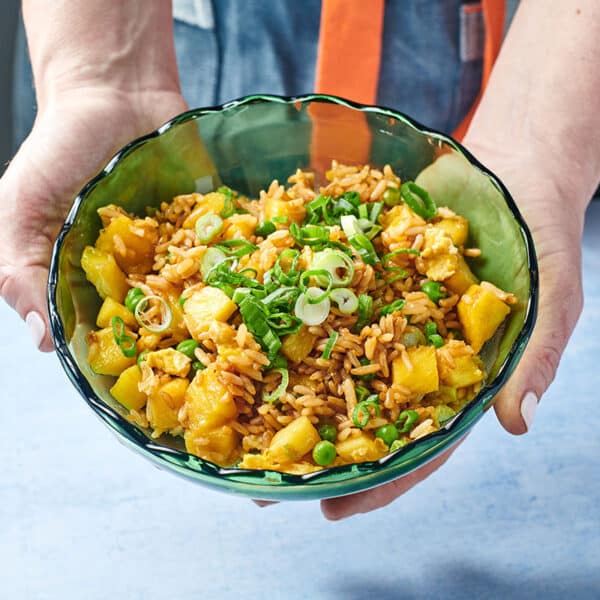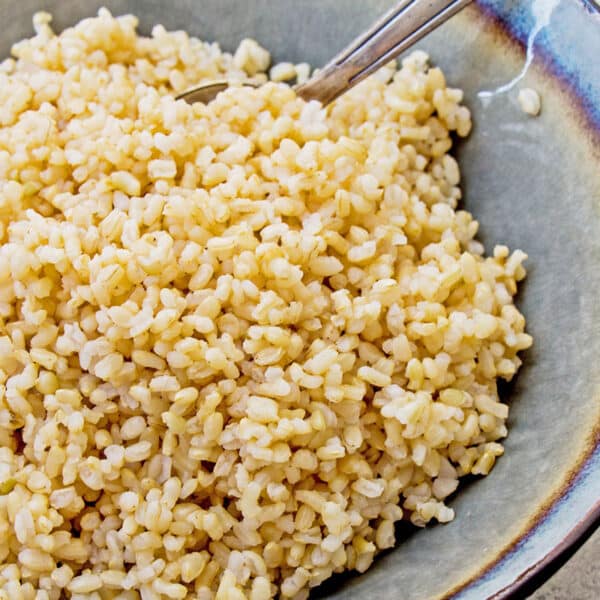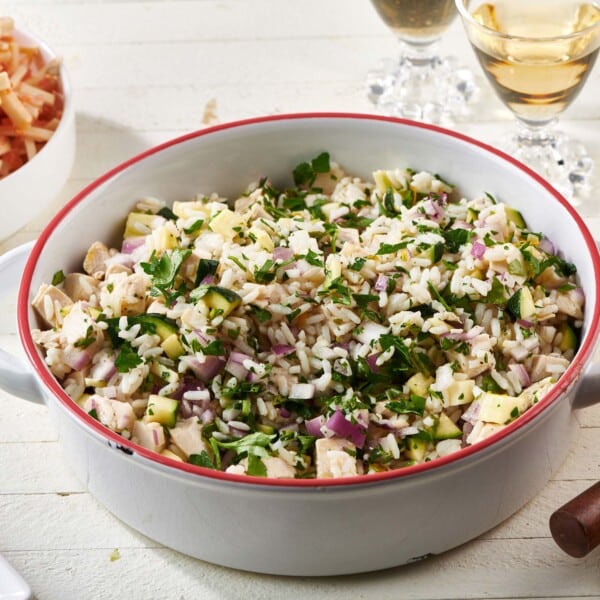How to Cook Wild Rice
on Nov 09, 2022, Updated Jan 30, 2025
This post may contain affiliate links. Please read our disclosure policy.
Nutty and earthy, tender, and a bit chewy, wild rice is easy to prepare, perfect for the holidays, and can be used in so many ways.
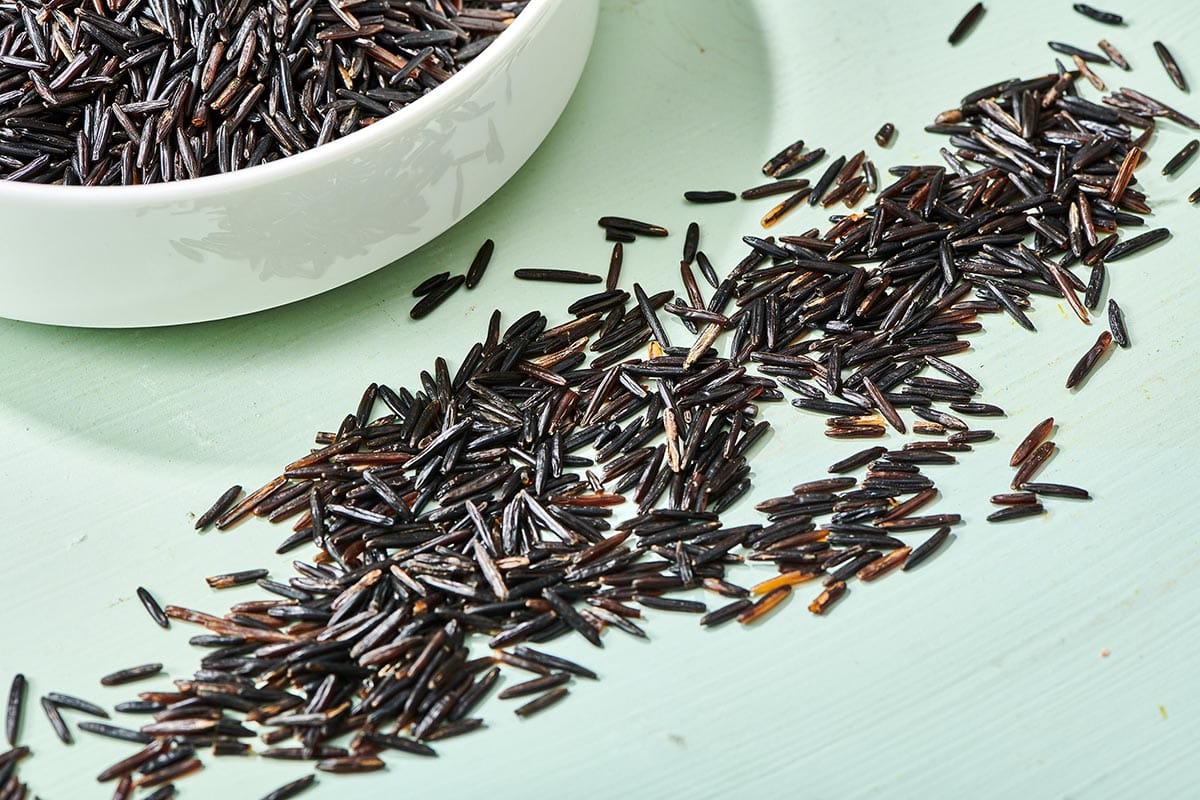
Tender, nutty, wild rice is as the base for saucy dishes like Chicken with Mushrooms in Cream Sauce or Thai Green Chicken Curry, and it’s an awesome substitution for white rice in soups like my Chicken and Rice Soup. Wild rice especially shines when paired with other classic Native American ingredients — try serving it on the side with some Grilled Corn on the Cob, Green Beans, and Maple-Roasted Butternut Squash.
Wild rice is a staple of the Native American diet. Much of the wild rice grown in the U.S. today is cultivated in Minnesota, Oregon, and California. Even though wild rice is technically not a form of rice (more on that below), you can still use these grain-like seeds in much the same way you would normal rice.
By signing up, you agree to our Privacy Policy.
What's In This Post?
- What Is Wild Rice?
- What Does Wild Rice Look Like?
- What Does Wild Rice Taste Like?
- Where to Find Wild Rice
- How to Prepare Wild Rice
- How Long to Cook Wild Rice
- Ingredients
- How to Cook Wild Rice
- How to Store Wild Rice
- Tips for Using Wild Rice
- FAQs
- What to Serve With Wild Rice
- More Easy-to-Cook Grains
- How to Cook Wild Rice Recipe
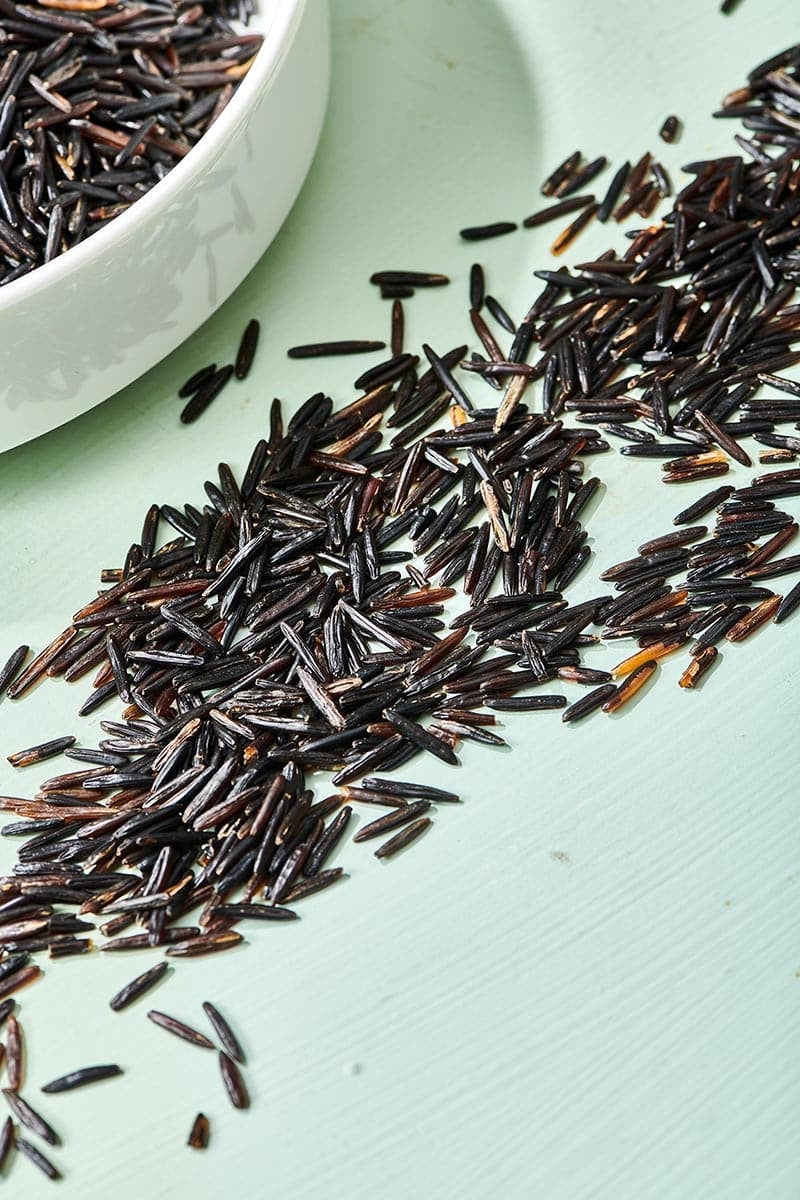
What Is Wild Rice?
The name “wild rice” is actually quite misleading — wild rice is not a grain at all but rather the seed of an aquatic grass native to North America. “Wild” wild rice (not cultivated wild rice) is hand-gathered using canoes in Minnesota and Wisconsin. It’s more expensive to buy because gathering the seeds is a labor-intensive, two-person job. Cultivated wild rice is less expensive and more readily available in supermarkets.
You can use either variety of wild rice in your recipes to a similar effect.
What Does Wild Rice Look Like?
All wild rice is black in color and somewhat shiny. The variety that is hand-gathered tends to be longer than its cultivated counterpart, sometimes pronouncedly so. For this wilder type of rice, the color may be more brownish than black, with hints of green, and the hull tends to be firmer and thicker.
What Does Wild Rice Taste Like?
The taste of wild rice is nutty and earthy, with hints of pecan, corn, and a vegetal flavor. The texture is quite tender, and the seeds split somewhat when they are cooked. As long as it is not overcooked, it should have a nice chew to it.
The flavor of the hand-gathered wild rice tends to be more savory than cultivated wild rice.
How to Cook Wild Rice: Nutty and earthy, tender and a bit chewy, wild rice is easy to prepare, perfect for the holidays, and can be used in so many ways.
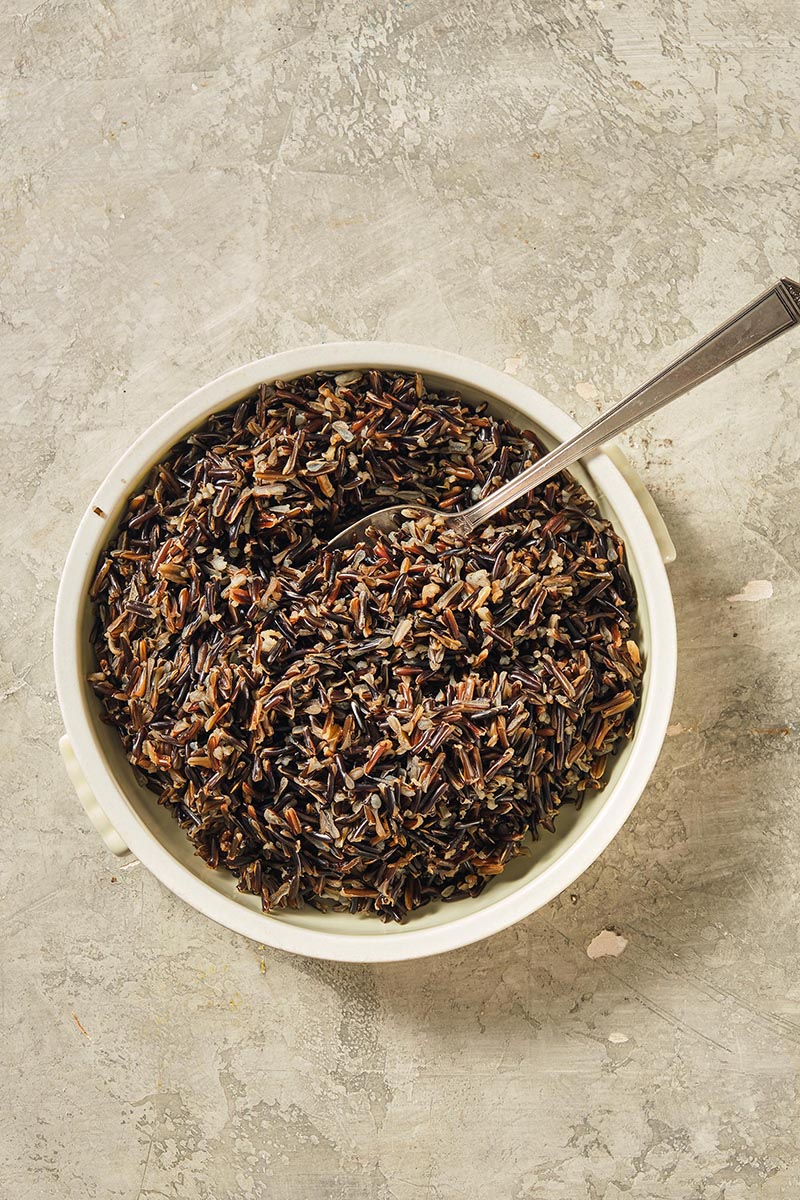
Where to Find Wild Rice
Even though it’s not technically rice, wild rice is usually found in the rice section of the market. Most grocery stores will only carry one brand, though specialty stores may have more. You can also find it in well-stocked bulk food aisles, particularly in stores that have a good supply of grains. There are different species of wild rice, so if you are a fan, keep your eyes open for various options.
How to Prepare Wild Rice
Wild rice should be rinsed before cooking, which will keep it from being sticky or gummy. If you have time, you can soak the rice for 30 to 60 minutes, and it will shorten the cooking time by up to half. However, it is not necessary to soak the wild rice — and if you do soak it, the texture might end up mushier than cooking unsoaked wild rice for a longer time.

How Long to Cook Wild Rice
These seeds can double or even triple in size when cooked. The cooking time may range from 40 to 55 minutes, and you should check to see if your package has specific directions. The cooking time will be shortened by up to half if the rice is soaked.
Overcooked wild rice is mushy and lacks flavor. Undercooked wild rice will be unpleasantly hard or chewy and also not very flavorful. So, taste as it goes, and take it from the heat and drain it when it is just done to your liking!
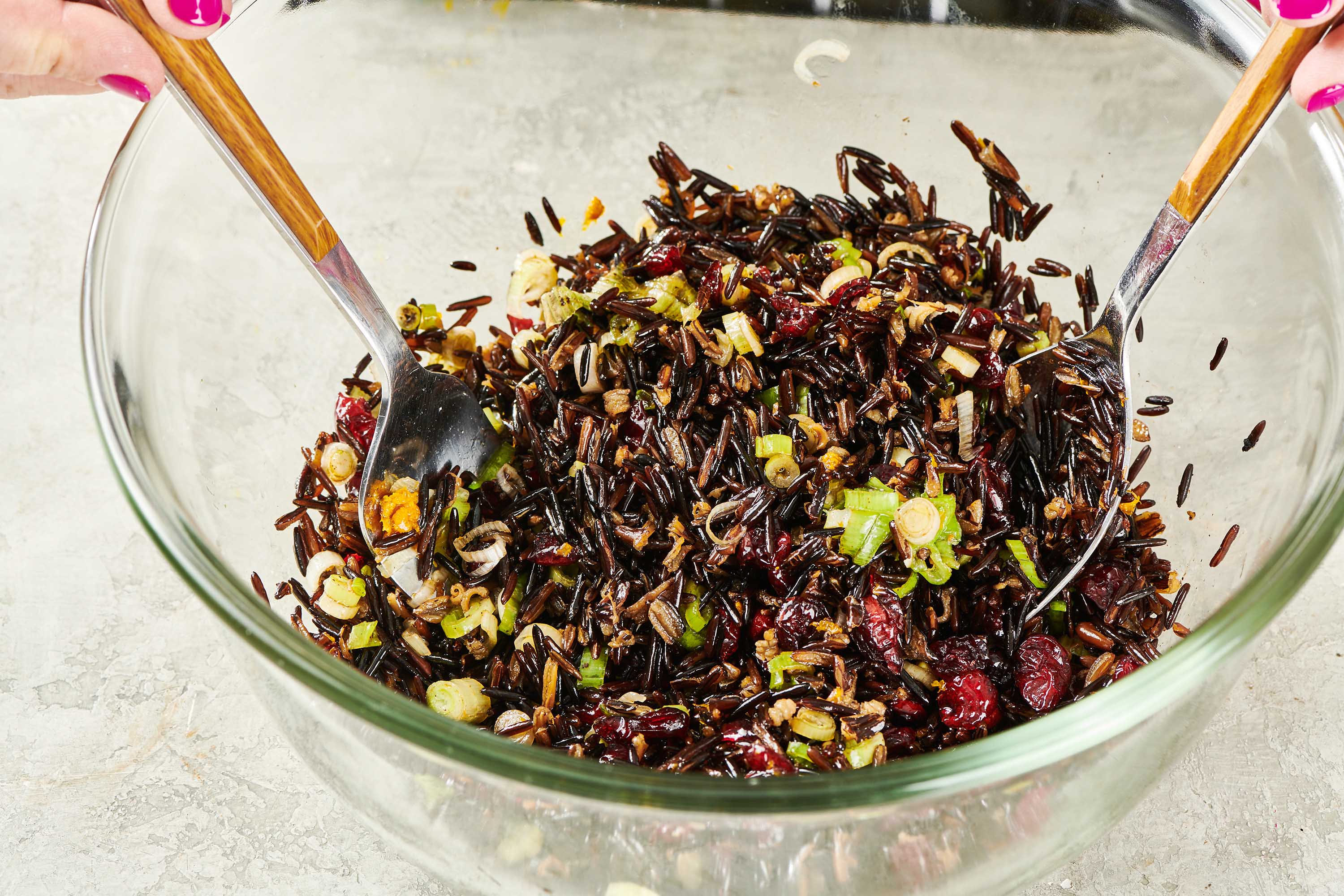
Ingredients
- Wild rice – Any variety you choose.
- Kosher salt – Salt is essential to cooking most grains, and wild rice is no exception.
- Broth or water – You can use chicken or vegetable broth to add depth to your rice. Water works just fine, though.
How to Cook Wild Rice
- Rinse: Rinse the rice in a fine mesh strainer.
- Combine ingredients in a saucepan: Place the rice and water or broth in a saucepan with a lid. If the broth is salty enough, you don’t need to add additional salt. If you are using water or less sodium broth, you may want to add some salt to the liquid.
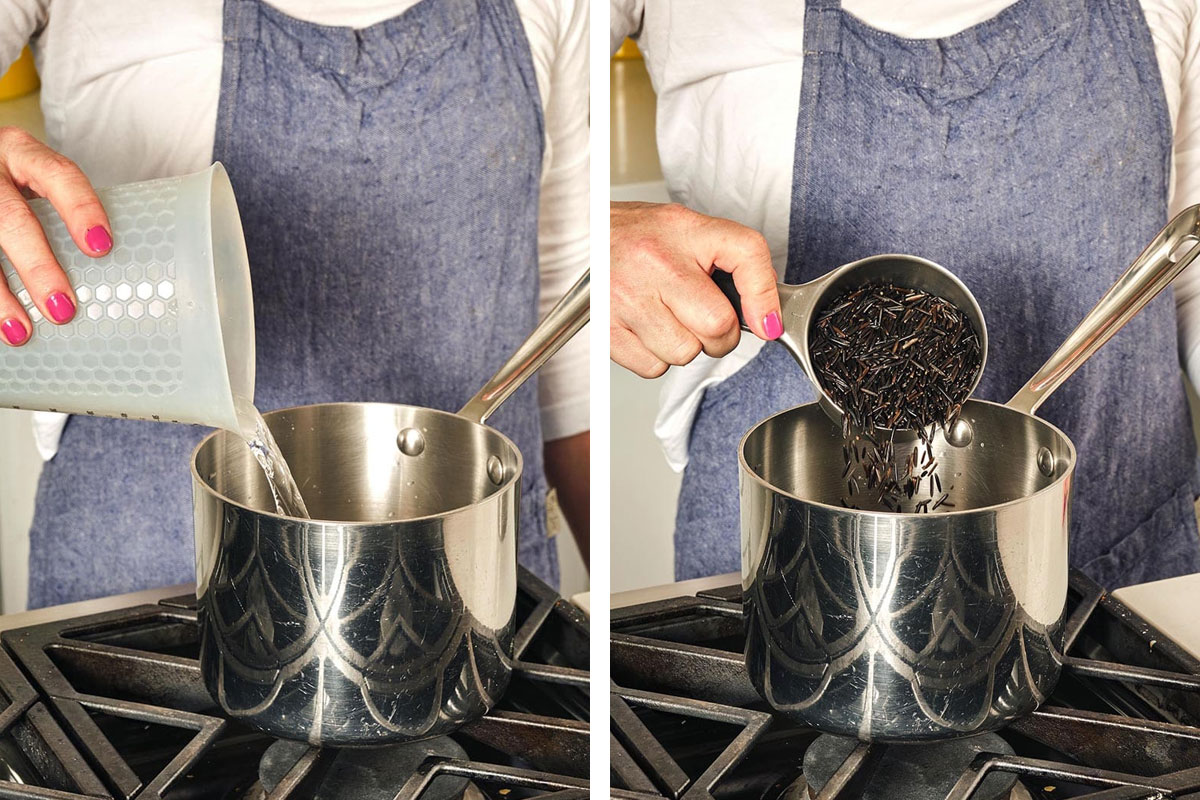
- Simmer: Bring to a simmer over medium-high heat, then cover the pot, lower the heat, and simmer for 40 to 50 minutes.
- Taste test: Start testing the grains at 35 minutes, and keep checking every 5 minutes if the grains aren’t tender and flavorful. If you have soaked your rice first, start checking to see if it’s done at 25 minutes. When the rice is tender and some of the grains have burst open, it’s done.
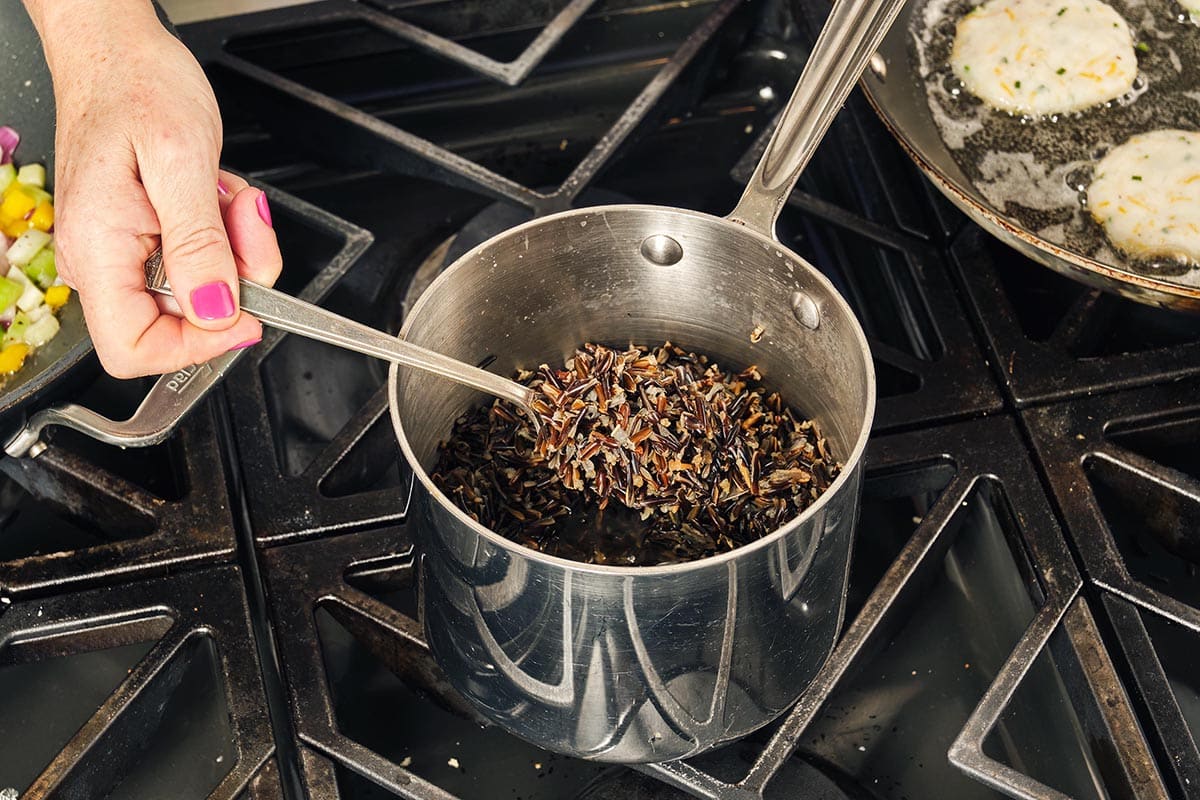
- Drain and serve: Drain the rice in a fine-mesh strainer and serve as desired. If you want to cool the rice for use in a salad or similar preparation, spread it out on a rimmed baking sheet to cool after the rice is drained. You can also drain the rice and rinse it under cool water to cool it down.
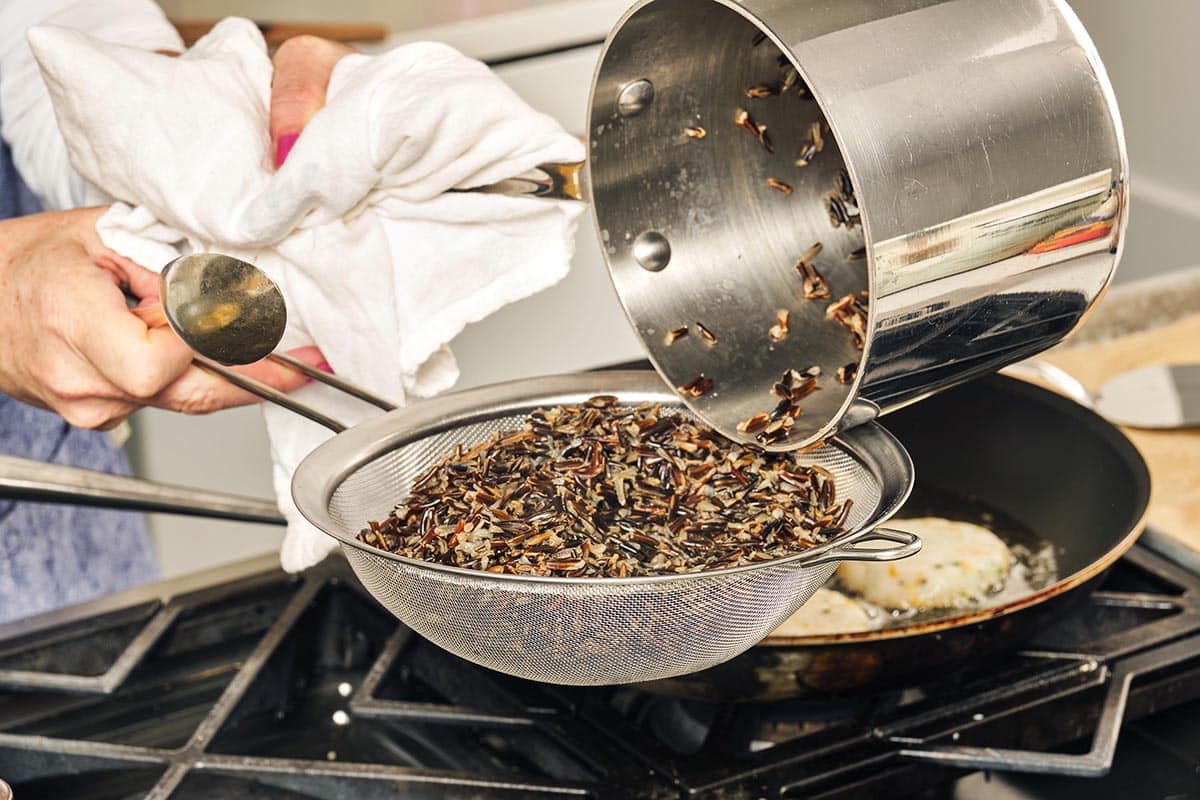
How to Store Wild Rice
- Store uncooked wild rice in an airtight container in a cool, dark place. It should last for 2 to 3 years, as long as moisture doesn’t get in.
- After cooking, wild rice can be stored in the refrigerator for up to 6 days in a tightly sealed container.
- Cooked wild rice can also be frozen for up to 6 months. Make extra sure that you’re storing it in an airtight container without excess air; try using a freezer-proof zipper top bag with any air pressed out. Make sure to label it for easy identification.
Tips for Using Wild Rice
- Salads: Either a rice salad, served at room temperature or warm, or added to greens or vegetable salads. Also, try Wild Rice Salad with Cranberries or Wild Rice Salad with Broccolini or Wild Rice and Sweet Potato Salad.
- Bowls: Top the rice with all kinds of toppings, from vegetables (sautéed mushrooms, roasted broccoli, steamed sweet potatoes) to tofu to cubed cooked meat or seafood. Try the tahini dressing in this salad drizzled over your bowl, or go another direction with Green Goddess Dressing.
- Casseroles: Try using wild rice as a substitute in any grain casserole.
- Side Dish: Mix different things into your wild rice. Chopped vegetables, dried fruit, herbs, crumbled cheeses, and so on.
- Soups: Wild rice is a terrific base for all kinds of soup. Make sure to add it already cooked and not to let it simmer further for too much longer, or it will start to lose its texture.
- Stuffings: Wild rice is sometimes used in stuffings for anything from a Thanksgiving turkey to a stuffed roast.
- Pilafs: Wild rice, often in combination with another kind of rice, is often featured in autumnal pilafs.
FAQs
Wild rice is quite good for you! It’s high in magnesium, phosphorous, fiber, calcium, and Vitamin B. It also has a high level of antioxidants, which are believed to be very helpful in warding off various illnesses, according to Verywell Fit.
Reheating wild rice is just as easy as reheating normal rice. You can do it on the stove or in the microwave. Either way, don’t forget to add water so that your rice comes out just as fluffy as it was in the first batch.
The water to wild rice ratio is 3 to 1.
Not all of the water will be absorbed; you will likely have to drain some off once the rice becomes cooked and tender.
What to Serve With Wild Rice
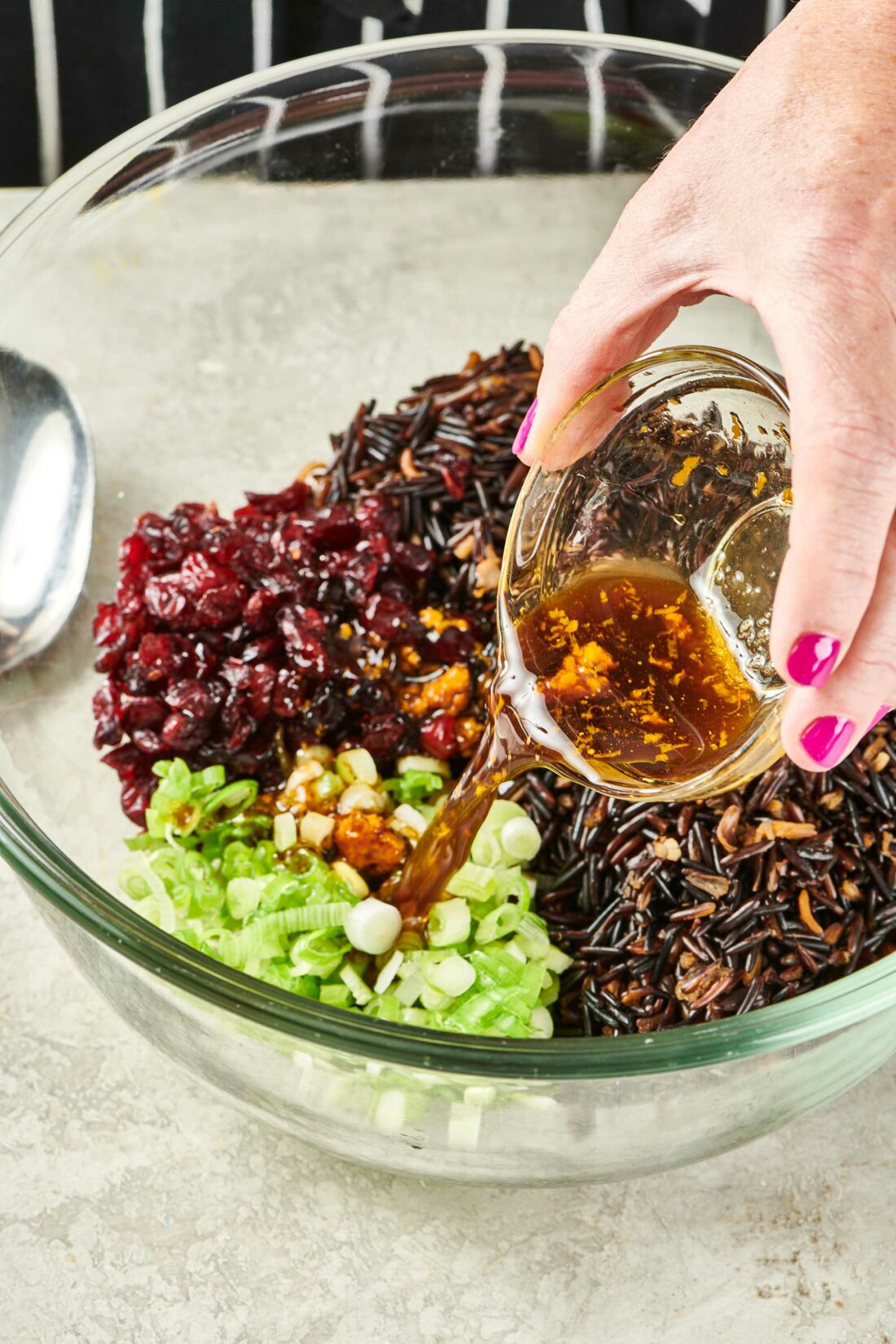
More Easy-to-Cook Grains
Pin this now to find it later
Pin It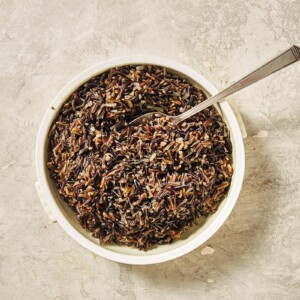
How to Cook Wild Rice
Ingredients
- 1 cup wild rice
- Kosher salt (to taste)
- 3 cups water or broth (chicken or vegetable)
Instructions
- Rinse the rice in a fine-mesh strainer.
- Place the rice and water or broth in a saucepan with a lid. If the broth is salty enough, you don’t need to add additional salt. If you are using water or less sodium broth, you may want to add some salt to the liquid.
- Bring to a simmer over medium-high heat, then cover the pot, lower the heat, and simmer for 40 to 50 minutes.
- Start testing the grains at 35 minutes, and keep checking every 5 minutes if the grains aren’t tender and flavorful. If you have soaked your rice first, start checking to see if it’s done at 25 minutes. When the rice is tender and some of the grains have burst open, it’s done.
- Drain the rice in a fine mesh strainer and serve as desired. If you want to cool the rice for use in a salad or similar preparation, spread it out on a rimmed baking sheet to cool after the rice is drained. You can also drain the rice and rinse it under cool water to cool it down.
Notes
- Store uncooked wild rice in an airtight container in a cool, dark place. It should last for 2 to 3 years, as long as moisture doesn’t get in.
- After cooking, wild rice can be stored in the refrigerator for up to 6 days in a tightly sealed container.
- Cooked wild rice can also be frozen for up to 6 months. Make extra sure that you’re storing it in an airtight container without excess air; try using a freezer-proof zipper top bag with any air pressed out. Make sure to label it for easy identification.
